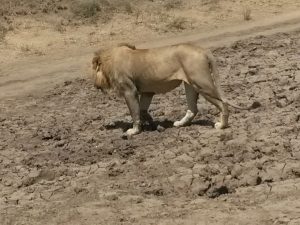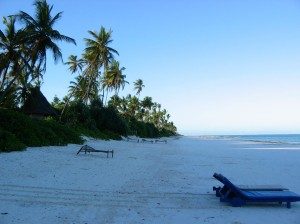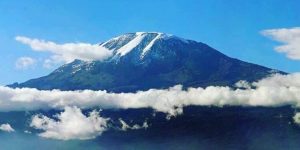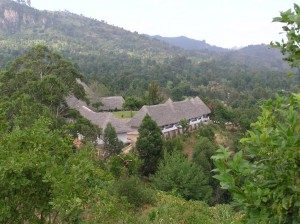Travelling in Tanzania
A wonderful country to explore
Tanzania is one of the most visited countries in Africa, and with good reason! It is a beautiful, stable, and relatively safe country with fantastic things to see and do, along with some of the friendliest people you will meet. Lonely Planet recently listed Tanzania in its Top 10 Countries for Travel in 2011 based on scores for topicality, excitement, value for money, and “that special X-factor.” There are many activities that GHTA volunteers take advantage of while staying in Moshi.
Go on a Safari

The Serengeti National Park has East Africa’s finest game areas and is one of the world’s best game parks. It is home to approximately 500 bird species and 70 types of mammals, including the “Big Five” – rhinoceros, lion, leopard, elephant, and buffalo. This high diversity in terms of species is a function of diverse habitats ranging from riverine forests, swamps, kopjes (rock hills/small Mountains), woodlands, and vast grasslands. The Serengeti hosts the largest mammal migration in the world each October, which is one of the ten natural travel wonders of the world. It is also home to the Maasai tribe.
The Ngorongoro Conservation Area is a UNESCO World Heritage Site and home to the magnificent Ngorongoro Crater and Olduvai Gorge. It adjoins the Serengeti National Park. The Ngorongoro Crater is a 260 km2 (100 m2) unbroken, unflooded volcanic caldera that acts as “a natural enclosure” for a very wide variety of wildlife. It is home to a population of approximately 25,000 large animals, with reputedly the highest density of mammalian predators in Africa and the densest known population of lions. Here you are likely to see wildebeest, zebra, eland, Grant’s gazelles, Thompson’s gazelles, elephants, buffalo, hyenas, jackals, mountain reedbuck, leopards, and, if you’re lucky, the rare black rhinoceros. The Crater is also home to the “Big Five.” The Olduvai Gorge is considered “the seat of humanity” after the discovery of the earliest known specimens of the human genus. It is one of the most important prehistoric sites in the world and research there has been instrumental in furthering understanding of early human evolution. Excavation work in the Gorge was pioneered by Mary and Louis Leakey in the 1950s and is continued today by their family.
Lake Manyara, said by Ernest Hemingway to be the “loveliest [lake] … in Africa,” is also a National Park that is the home of a diverse set of landscapes and wildlife. This park can be visited in half a day and people come to see the lake, baboons, elephants, hippos, impalas, wildebeest, buffalo, warthogs, giraffes, giant fig trees, mahogany, and many types of birds. The Rift Valley Escarpment provides a spectacular backdrop to Lake Manyara.
Many of OMAWA’s volunteers do a 2 day safari to Ngorongoro or Lake Manyara on a weekend, while others do a 5-7 day safari (including the Serengeti) at the beginning or end of their time with the organization. Safaris are easily organized from Moshi.
Visit Zanzibar

Zanzibar is a world-famous island located in the Indian Ocean, about 25 miles off the Tanzanian mainland coast, and 6° south of the equator. It has a fascinating history, including at least 50,000 years of human occupation. Zanzibar was settled and used as a strategic trading port by Persian traders. Zanzibar has seen Arab, Portuguese, Omani, and British occupations. Its historic centre, known as Stone Town, is a World Heritage Site.
Go on a Spice Tour, see the rare Red Colobus monkey, wander in the magical labyrinth of Stone Town’s winding streets, watch the sun set into the ocean with a cocktail at Livingstone’s, or relax on one of the beautiful sandy beaches and go snorkeling to the coral reefs. Being near to the equator, the islands are warm all year round. Many of OMAWA’s volunteers fly from Kilimanjaro International Airport directly to Zanzibar to enjoy a weekend in a tropical paradise. For volunteers with more time, you can travel to Dar es Salaam and take a boat to the island.
Climb Mount Kilimanjaro
 Mount Kilimanjaro is the highest freestanding mountain in the world and the highest mountain in Africa. It stands 5,895 metres (19,341 feet) above sea level and is fourth highest of the Seven Summits. Thousands of people climb the mountain each year, though you shouldn’t underestimate its challenges. The altitude, low temperature, and occasional high winds make this a difficult and dangerous trek – not everyone makes it to the Uhuru summit. Volunteers who wish to climb Kilimanjaro are advised to undertake appropriate research and ensure that they are both properly equipped and physically capable to do so.
Mount Kilimanjaro is the highest freestanding mountain in the world and the highest mountain in Africa. It stands 5,895 metres (19,341 feet) above sea level and is fourth highest of the Seven Summits. Thousands of people climb the mountain each year, though you shouldn’t underestimate its challenges. The altitude, low temperature, and occasional high winds make this a difficult and dangerous trek – not everyone makes it to the Uhuru summit. Volunteers who wish to climb Kilimanjaro are advised to undertake appropriate research and ensure that they are both properly equipped and physically capable to do so.
There are six official climbing routes by which to climb Mt Kilimanjaro: Marangu, Rongai, Lemosho, Shira, Umbwe, and Machame. The routes range from 5 to 10 days of climbing, though a minimum of 6 days is recommended to allow your body to adjust to altitude as you climb. Acclimatization is essential and most people experience some element(s) of altitude sickness.
Many OMAWA volunteers have climbed “Kili” and found it to be a rewarding experience. You can arrange a climbing trip at the beginning or end of your time with the organization. Climbs are easily organized from Moshi and there are discounts for using the same company for a Kili climb and a safari. You can bring your own gear from home or rent it from your tour company or the many climbing shops in Moshi.
Visit the Usambara Moutains

The Usambara Mountains are a lovely break from the heat of Moshi. With cooler climates, winding paths, gorgeous vistas, and picturesque villages, they are a wonderful place to spend the weekend. Lushoto, a leafy highland town, is the place to base yourself to enjoy the local culture and to take hikes into the surrounding hills. The Usambaras are unique within East Africa because they are covered in tropical forest. Hiking is relatively easy but beautiful and the local villages are really interesting. It’s an area that not as many tourists visit. Volunteers at GHTA can go easily for a weekend visit as Lushoto is approximately 4 hours from Moshi by bus.
Planning to Travel?
Many people want the comfort of knowing their travel activities are booked in advance of leaving home. However, you should note that you will save money on your excursions by booking locally from Moshi. OMAWA has a book in the volunteer house with information on what companies former volunteers have used for trips and what their experiences were like. OMAWA does specifically recommend that you book with us. If you want to book before you leave home Lonley Planet, Rough Guide and other guidebooks list many reputable companies. We can also put you in touch with local climbing and safari guides.







